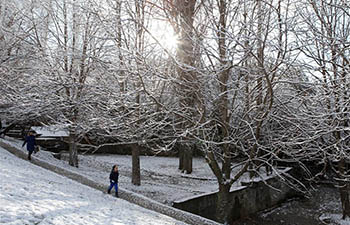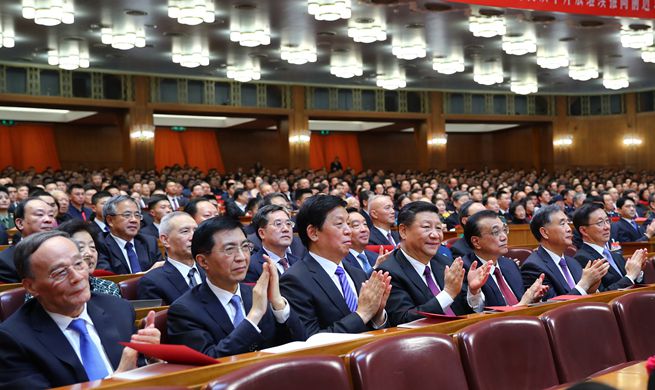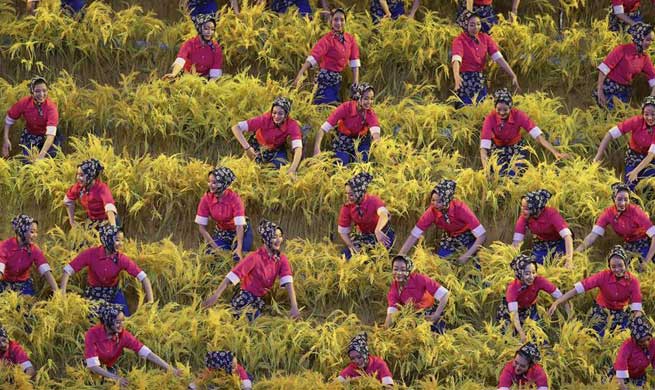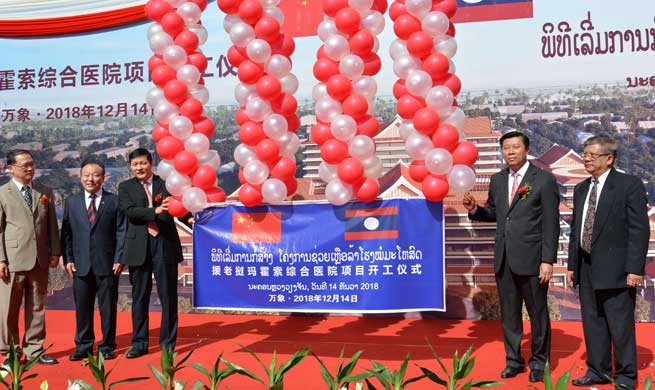KUNMING, Dec. 9 (Xinhua) -- The income of Yang Zhuying's family has seen a sevenfold leap in the last 10 years thanks to the ginkgo trees in her yard that date back four centuries.
Since November when the ginkgoes were tinged with autumn gold, 52-year old Yang has been working from dawn to dusk on her farm, serving hundreds of visitors her best dishes such as stewed chicken with gingko nuts and scrambled egg with gingko flowers.
Her two-story wooden house has been newly renovated, with strings of corns and oilpaper umbrellas hanging under the roof, welcoming visitors to try the rural tastes.
"Late autumn and early winter are the most popular seasons for visitors to come see the ginkgo trees. People love to come with their families to chat, take pictures and enjoy a relaxing time together," Yang said.
She runs one of the 140 farm stays in Jiangdong village in the city of Tengchong, southwest China's Yunnan Province.
The bordering village is rich in natural resources with more than 30,000 ginkgo trees covering over 667 hectares, but about 70 percent of its residents were once living under the poverty line, partly due to its remoteness and weak infrastructure.
"I used to be a farmer and my husband a carpenter. We spent almost every penny we made to support sending our two kids to school," Yang said.
"We had no electric appliances and a handmade table and chair set was our only furniture," she added.
To shake off poverty, the village has been promoting tourism since 2006, centered on the natural beauty of ginkgo trees, which are believed to be a legacy left by ancestors of Jiangdong people who, attracted by the vast stretch of golden trees, decided to settle in the region in Ming Dynasty (1384-1644).
"When local officials encouraged us to do agritainment in 2006, I didn't think about it much. I would try anything at that time as long as there was a chance to get out of poverty," Yang said.
Yang was among the first in Jiangdong to engage in the business. She borrowed 30,000 yuan (4,365 U.S. dollars) from relatives and friends to renovate her house and received government subsidies of almost the same amount for a pavilion, a gate and four beds in her farm stay.
"Life is getting better. We earned 70,000 yuan last year, a number that we could never imagine in the past," Yang said.
Official data shows that more than 360,000 tourists visited Jiangdong, the "ginkgo village," last year, bringing in tourism revenue of over 60 million yuan and resident's per capita disposable income reaching more than 12,000 yuan a year.
"More than 2,400 people have shaken off poverty due to the ginkgo tourism, and those below the poverty line only account for less than two percent of the people in Jiangdong," said Chen Anzhong, a senior official of Jiangdong.
Tourism is a new channel of revenue for China's rural residents in recent years. According to the China National Tourism Administration, rural areas attracted 2.5 billion tourists last year, generating spending of over 1.4 trillion yuan.
As tourism blossoms, the construction of a beautiful village also develops vigorously.
More than 200 roads in and to Jiangdong have been widened. Sewage treatment, water management and parking lot construction are providing an improved and more comfortable living environment.
"With the ginkgo-driven rural tourism, the small leaves now shine as glorious as gold," Chen said.

















